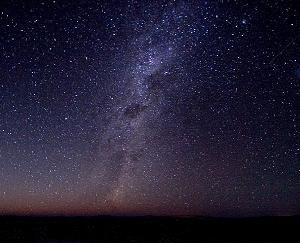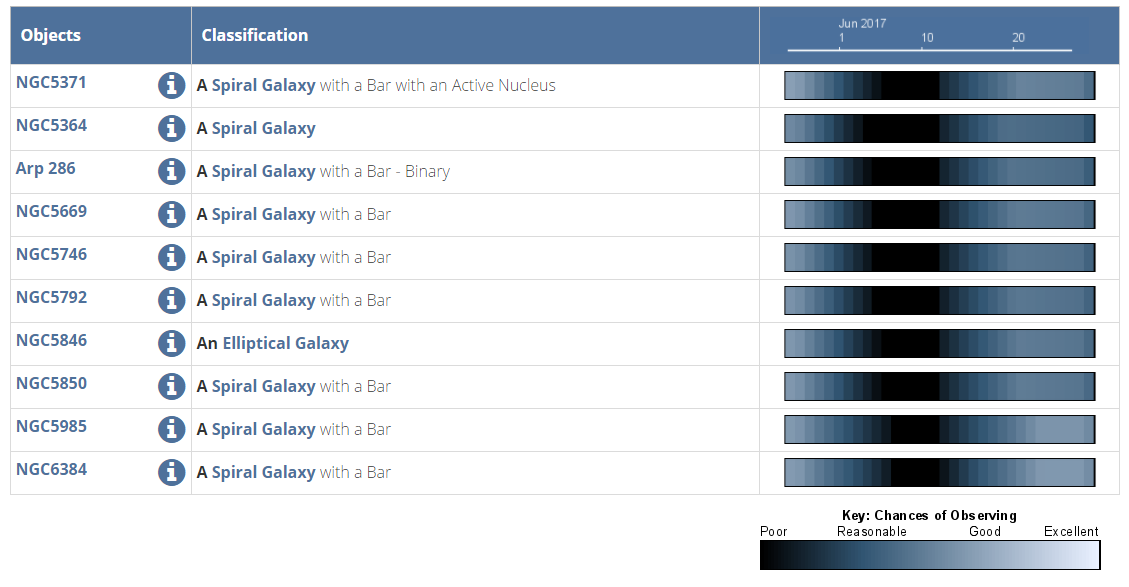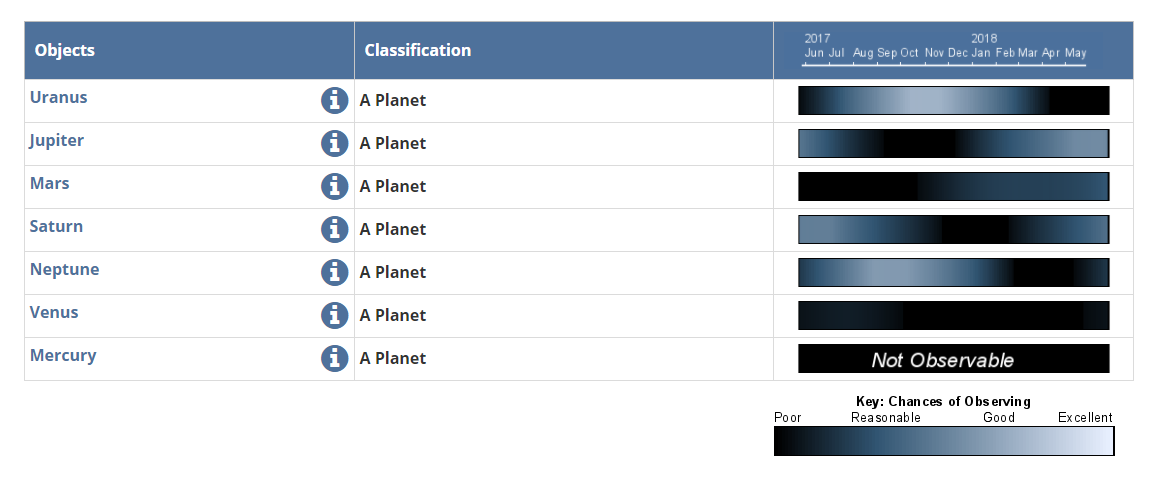Decide What to Observe

Credit: The Schools' Observatory
Whether you are just starting to learn how to use the Liverpool Telescope, or are a regular user, sometimes you just need some help deciding what to observe.
Resources around the website
The Liverpool Telescope is robotic, so you do not have to stay up all night to use it. However, you do have to consider when you request your observations. Sometimes the light from bright objects in the sky (e.g. the Sun or full Moon) blocks your chosen astronomical object from the telescope’s view.
These web pages will help you to plan your observations:
Use the visibility scale

Credit: The Schools' Observatory
The Go Observing interface will help you with decision making. For each type of object (e.g. planets, galaxies, stars etc...) it puts the object you have the best chance of observing at the top of the list. The visibility scale shows you the chances of observing each object in the upcoming time period.
Want to get your images quickly? Choose something where the chance of observing is Good or Excellent on the day you submit your observation.
You can turn the potential problem of not being able to observe your favourite planet right away into a classroom activity. Students can explain why some objects can be observed almost immediately, and for others you need to wait.
Use the Learn section to explore different kinds of astronomical objects.
Galaxy Example
The image below shows a list of galaxies on the left. There is a ‘visibility bar’ for each galaxy on the right. The colour of the visibility bar tells you how good the chances are of observing that object in the upcoming time period.

Credit: The Schools' Observatory
The visibility bar shows poor conditions for observing all galaxies around the 3rd of June, and good conditions for observing all galaxies around the 11th of June. This is because there is a full Moon during this period. The telescope knows not to observe galaxies around the full Moon because the light from the Moon brightens the night sky. You need a dark sky to get good images of deep-space objects like galaxies without them looking “washed out”. Go Observing takes this into account and shows you that the chance of observing the galaxies around the full Moon is poor.
Planet Example
The image below shows a list of planets for the same time period as above.

Credit: The Schools' Observatory
This shows us good chances of observing Jupiter, Saturn, and Neptune during the full Moon. Planets are much brighter than galaxies, so the full Moon does not interfere with observations of the. But planets do orbit the Sun at different speeds so are sometimes hidden by the Sun.
Unfortunately, you cannot observe the planet Mercury with the Liverpool Telescope. This is because Mercury is closer to the Sun than we are. It is also very difficult to get a good image of Venus for the same reason. However, you may be able to spot them without using a telescope. Use our Sky at Night This Month page to plan your observations.
Other Resources
You can use websites such as Heavens Above and Sky View Café to find out about what is in the sky. Stellarium is a good piece of planetarium software that you can download for free or use in a browser.

